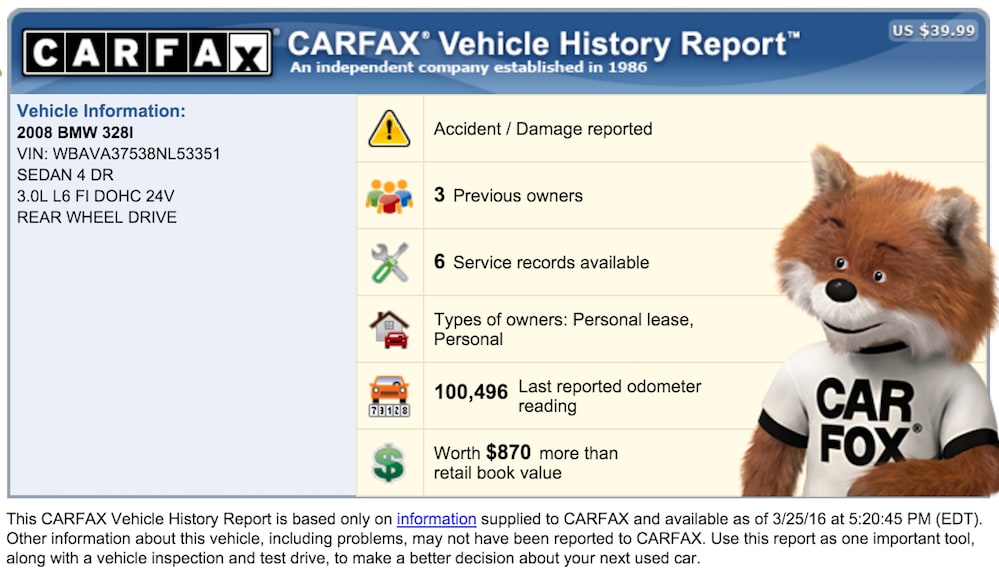

You’ve found a car you love, and it’s a great price. The only problem is that the seller doesn’t have the car title. Is that an issue you can solve, or should you walk away from the sale? There are a couple of situations where the seller may legitimately not have a title: it may have been purchased previously from somewhere that did not use vehicle titles, or the car title may have been misplaced, damaged, or stolen. But it’s also entirely possible that the vehicle itself is stolen.
A car title declares the vehicle’s legal owner. If you buy a car without a title, someone who possesses the title can claim ownership even though you’ve paid for the vehicle. In order to register the car in your state, you’ll need the title to prove that you are the legal owner of the car.
It’s possible to buy a car without a title, but it should be approached with caution. Here’s how to buy a car when the seller doesn’t have the title for you.
Method 1 of 5: Research the car thoroughly
Determine if the car is, in fact, what the seller says it is. A missing title can be a red flag for an impropriety like a stolen car, a salvage title, or a flood vehicle.

Step 1: Get a vehicle history report online. Access a reputable VHR site like Carfax or AutoCheck to confirm the vehicle’s legal status.
A VHR tells you the car’s title status, gives an odometer report, and indicates previous accidents or insurance claims. Check on abnormalities such as inconsistent and unexplained mileage reports or items that contradict what the seller has told you.
- Warning: If the seller hasn’t been truthful, it’s a good idea not to proceed with the purchase.
Step 2: Contact the state DMV office. Ask for information using the VIN number, request the vehicle’s history in the state, and confirm the title status with the clerk.
Some questions may not be able to be answered if they contain confidential or personal information.
Step 3: Check if the car is stolen. Run the car’s VIN through the National Insurance Crime Bureau to deterimine if the car has been reported as stolen and not recovered.
Only proceed with the car purchase without a title present if there are no red flags that can’t be resolved.
Method 2 of 5: Complete a bill of sale for the purchase
The bill of sale is a critical part of the sale process, especially when the car title is missing. Before paying for the car in full, write out a bill of sale for the transaction.

Step 1: Write out the details of the sale. Indicate the car’s VIN number, the mileage, and the sale price of the car.
Identify any terms of the sale, such as “as is, where is”, “seller to supply title”, or items included or excluded from the sale.
Step 2: Indicate the seller’s and buyer’s complete information. You want both parties’ full addresses, legal names, and phone numbers indicated on the bill of sale.
Step 3: Pay the seller for the vehicle. Pay using a method that can be proven later on.
Use a check or bank draft to pay for the vehicle. Alternatively, you can make a sales agreement that places the funds in escrow until the terms of the sale are met. This is a great idea if the seller promises to get you the car’s title.
Method 3 of 5: Acquire a replacement title through the seller
If the seller has previously registered the car with the DMV in their name, they can request a replacement title to replace the lost one.
Step 1: Have the seller fill out a Duplicate Title Request from the DMV. Each state has their own form to fill out.
The form requires the seller’s complete name, address, the car’s Vehicle Identification Number (VIN), mileage, and proof of identity. Other requirements may be necessary such as lienholder information.
Step 2: Submit the Duplicate Title Request. It can take several days for a duplicate title to be issued and sent.
False or incomplete information can result in the duplicate title being denied or delayed.
Step 3: Proceed with the purchase. The new copy of the car title will be sent to the seller and you can proceed with the car purchase like normal.
Method 4 of 5: Track down the previous car title
If the seller has never registered the car nor had the title transferred into their name, it will be more difficult to get a car title. It may take some time-consuming legwork to obtain a title from a previous owner.
Step 1: Identify the last state in which the car was registered. On your Vehicle History Report, locate the last state that reported the car.
The car could be from out-of-state, making the transaction more complicated.
Step 2: Contact the DMV for the contact information for the last titled owner. Explain the reason for your call, and politely request information on contacting the previous owner.
Step 3: Call the last known title holder for the car. Make contact with the title holder, identifying your reason for calling.
Ask them to request a duplicate title so you can register the car in your name.
Method 5 of 5: Obtain a Surety Title Bond
In some states, it’s possible to get a Surety Bond to obtain your new title. The Surety Bond is a financial security measure and a declaration. It’s your guarantee that the car is truly yours and your monetary bond ensures that, if financial penalties result, the bond provider is covered.
Step 1: Check if there is a lien on the car. If there is a lien, don’t complete the purchase until it has been cleared by the seller and lifted.
You can check for a lien by contacting the DMV and providing the VIN number. If no lien is present, you can continue. If a lien is registered on the car that the seller won’t deal with, walk away.
Step 2: Locate a Surety Bond company in your state. Once you find a bond company, determine their specific requirements for a Lost Title Bond.
Most states are similar, requiring proof of purchase, proof of residency in your state, proof that the car is not junk or salvage, and an accurate valuation.
Step 3: Have a vehicle valuation performed. Based on the bond company’s requirements, have a vehicle valuation performed.
This is used to calculate the amount of bond required for your Lost Title Bond. The bond is typically between one and two times the value of the vehicle.
Step 4: Purchase the Lost Title Bond. You don’t pay the whole bond amount.
Rather, you pay a portion of the bond amount. It can be as little as a few percent of the bond amount.
Once you’ve obtained a duplicate or bonded title, you can register the vehicle as your own.
You’ll need to complete a state inspection to license your vehicle, and YourMechanic can help you with those repairs. Once you have a title, keep it in a safe place. If you have any questions about the process, Ask a Mechanic for some quick and helpful advice.



